Plasticine Shapes – ILA 10 : 2D Orthographic to 3D Form
I started by directly translating the orthographic projections on the faces of cubes, which allowed me to visualise the shapes better.

I was then able to imagine and understand the shapes, and I drew them out, once again using a cube as a base. This use of the cube would also allow the sculpting process to be easier, as I would know easily what to leave and what to remove.
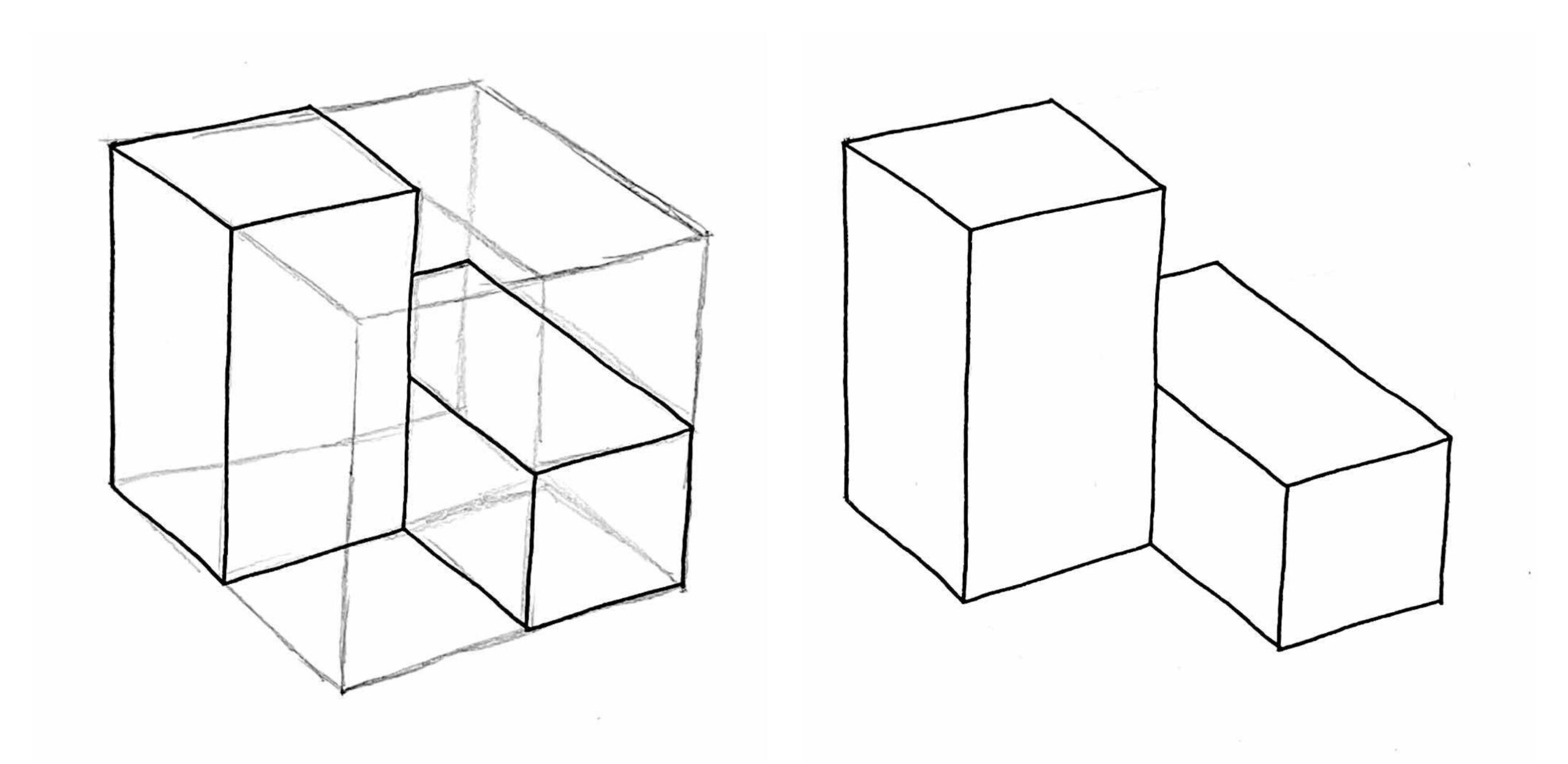
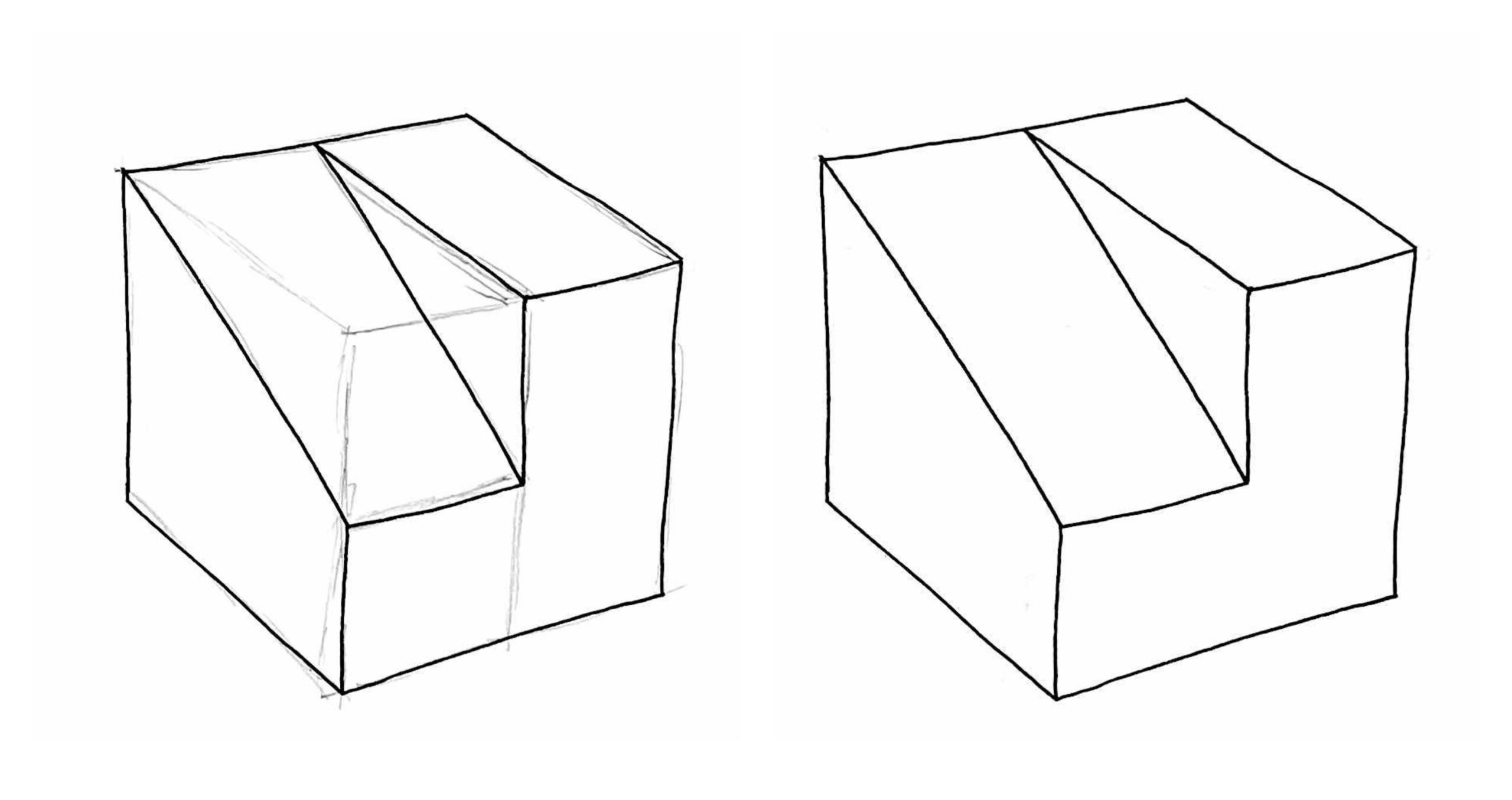
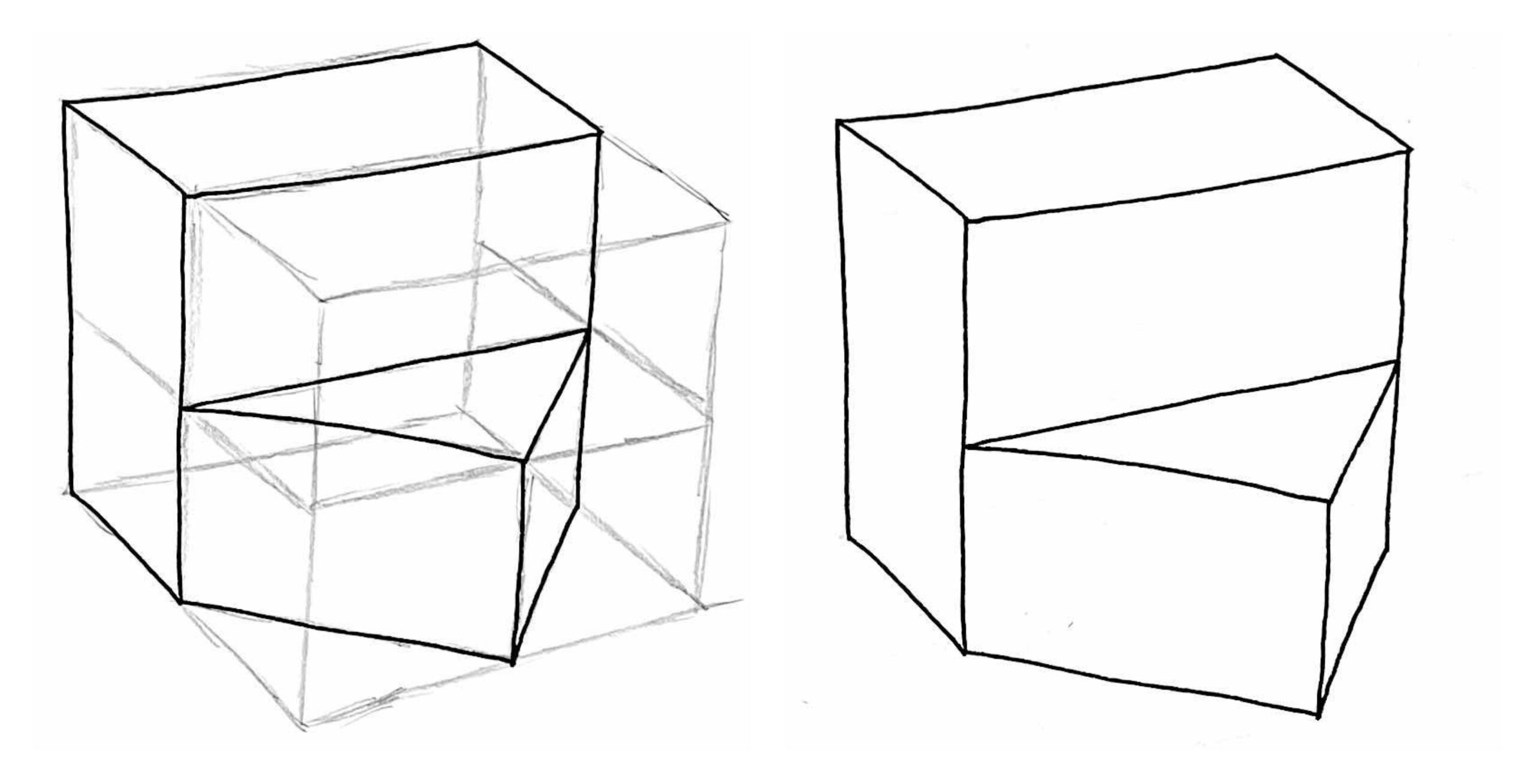
I was then able to sculpt these using plasticine. It was a bit challenging to get really straight edges and clean lines, but as I had a longer blade it allowed me to make the shapes pretty regular. And as I had thought, the cube based drawings made it so easy to know how to go about making the shapes.
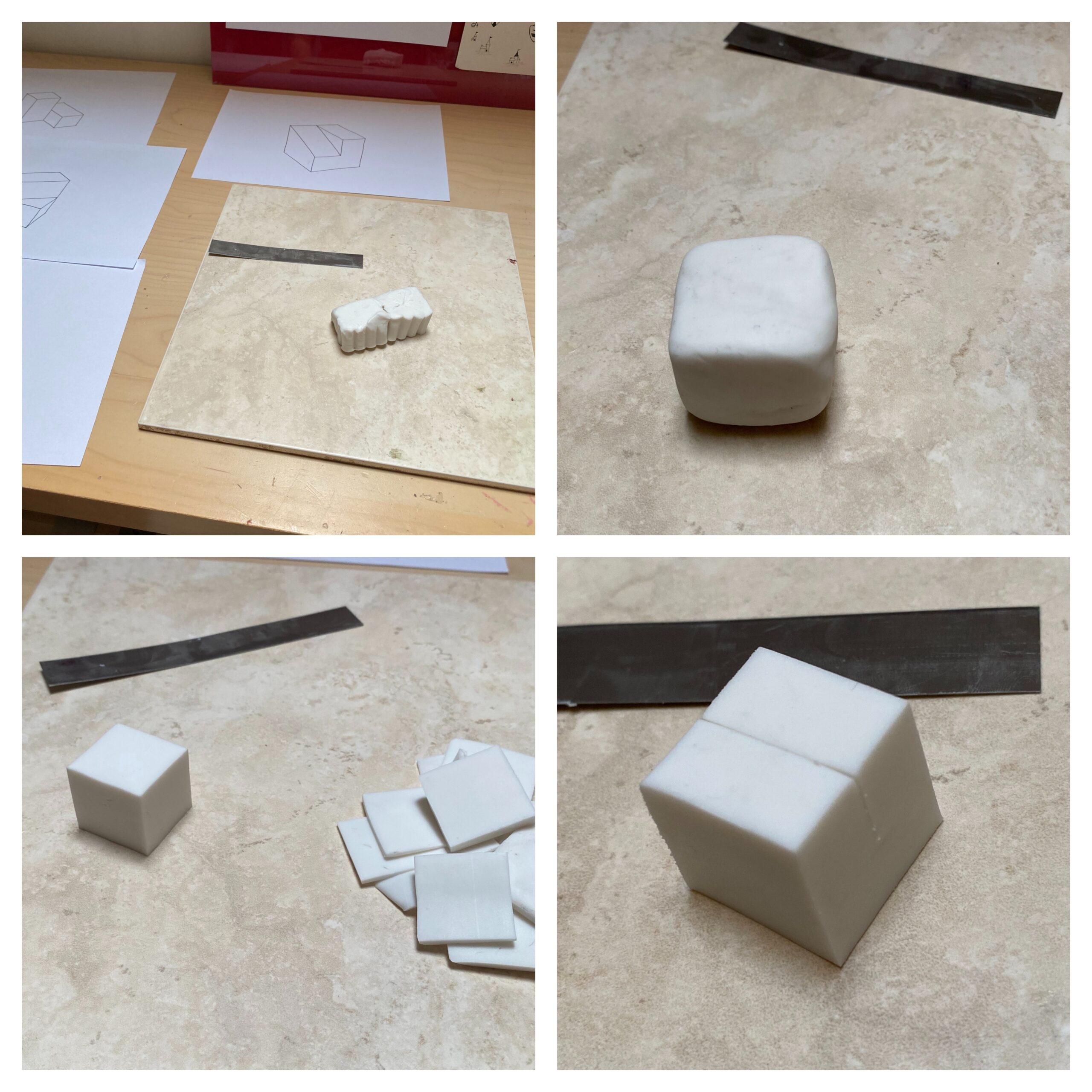

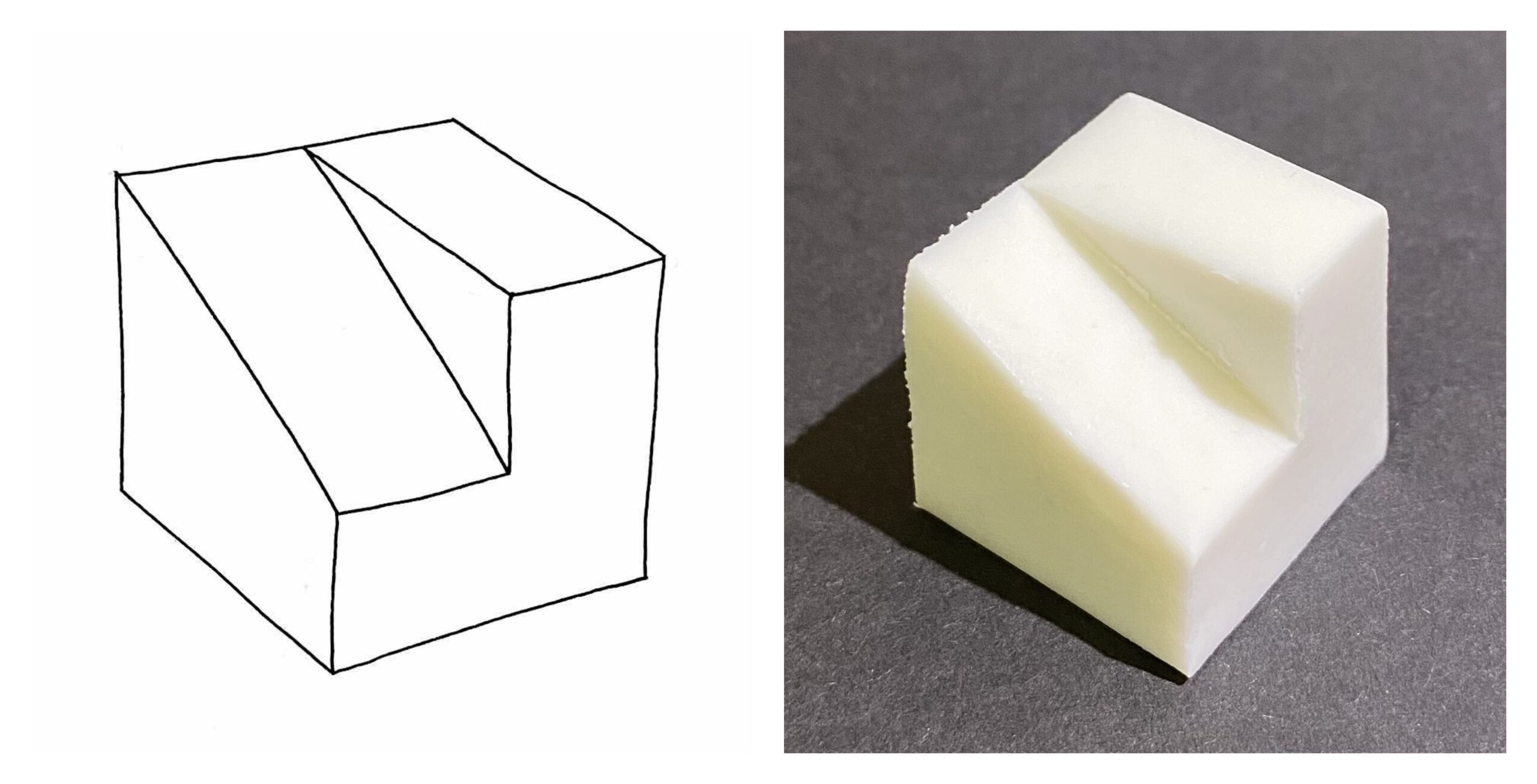
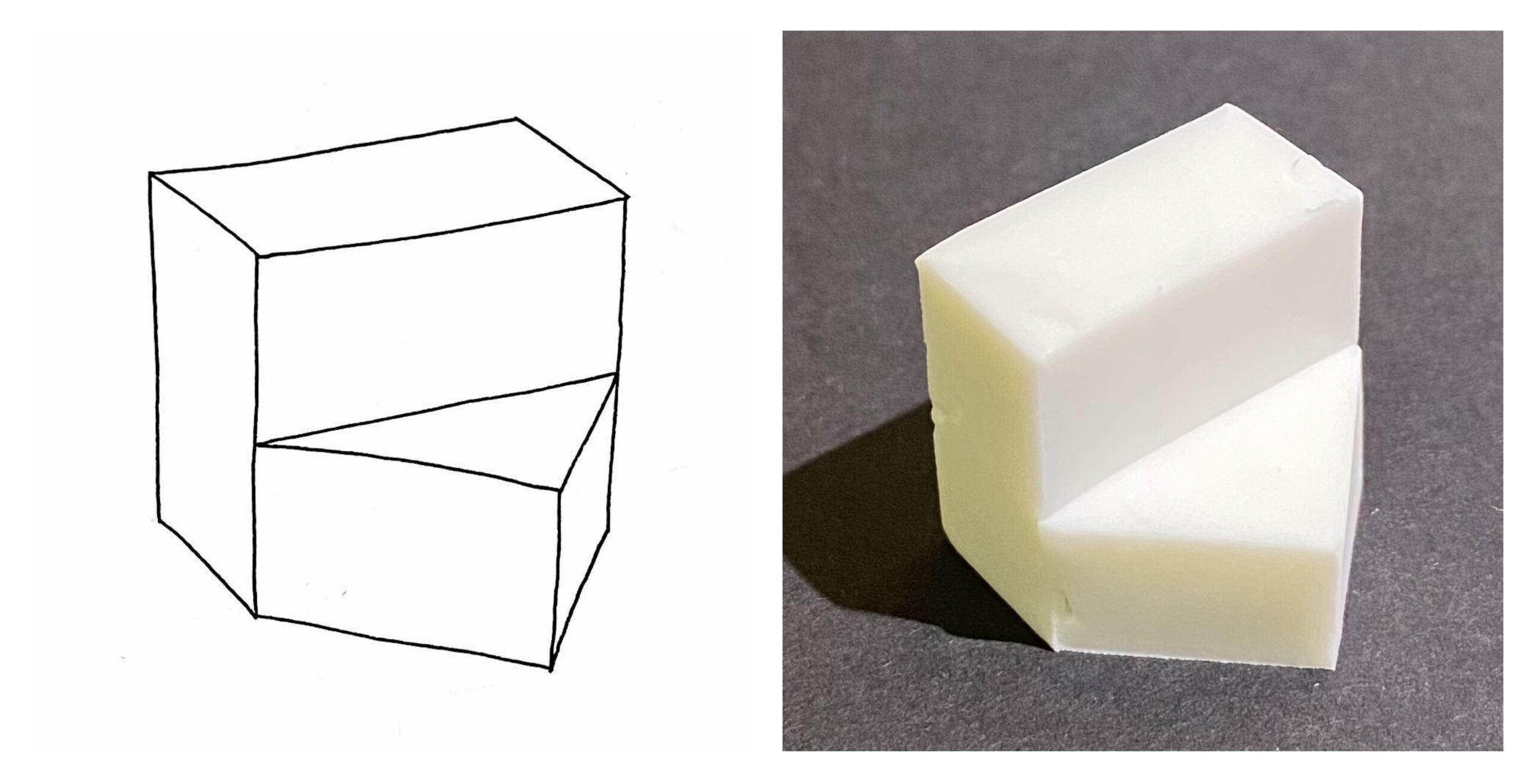
I also took photos of the different sides, to be able to compare the 3D shape back to the orthographic projections. This was also really interesting as the more confusing elevations suddenly made a lot more sense when seeing it all like this.
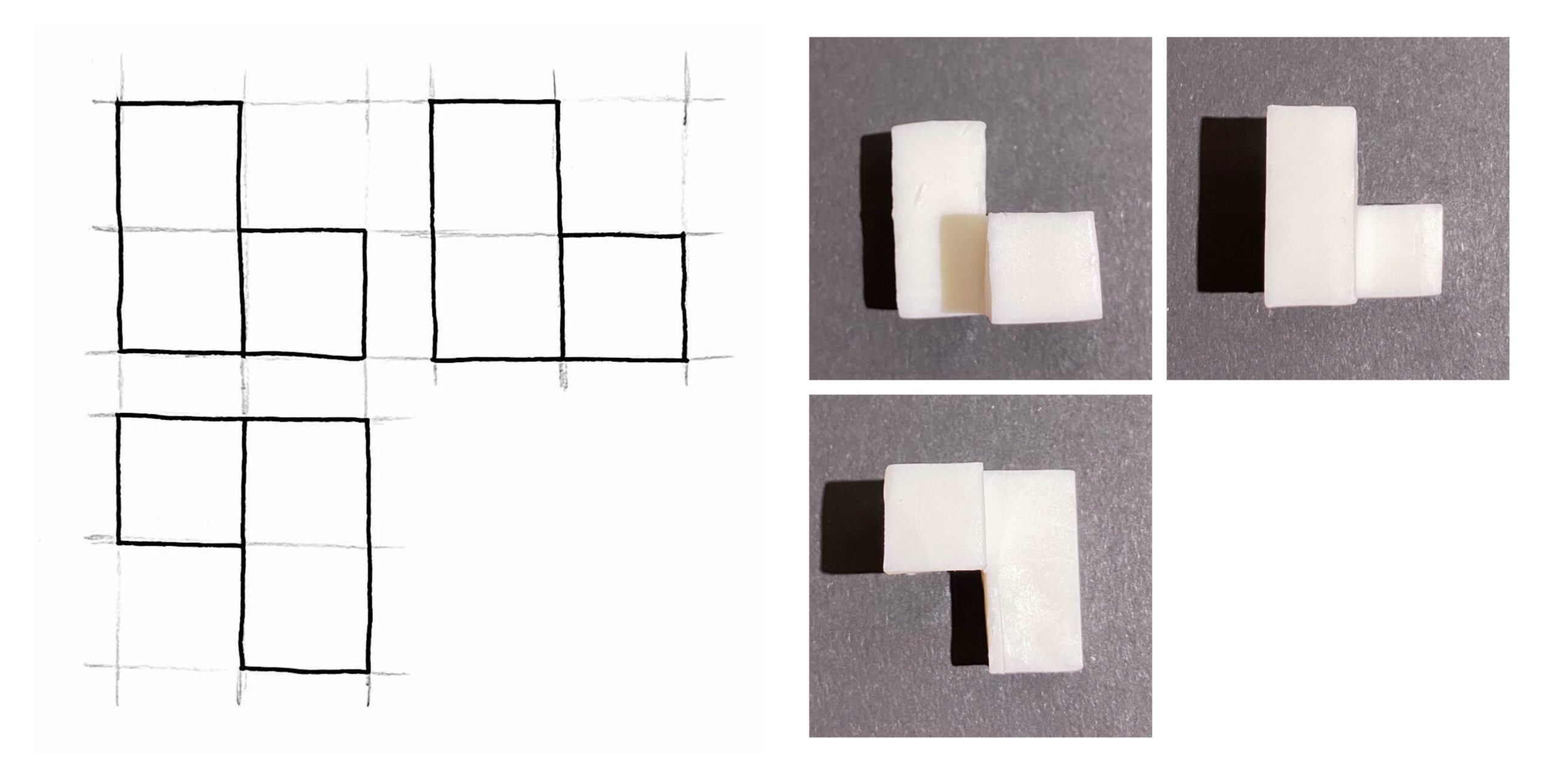
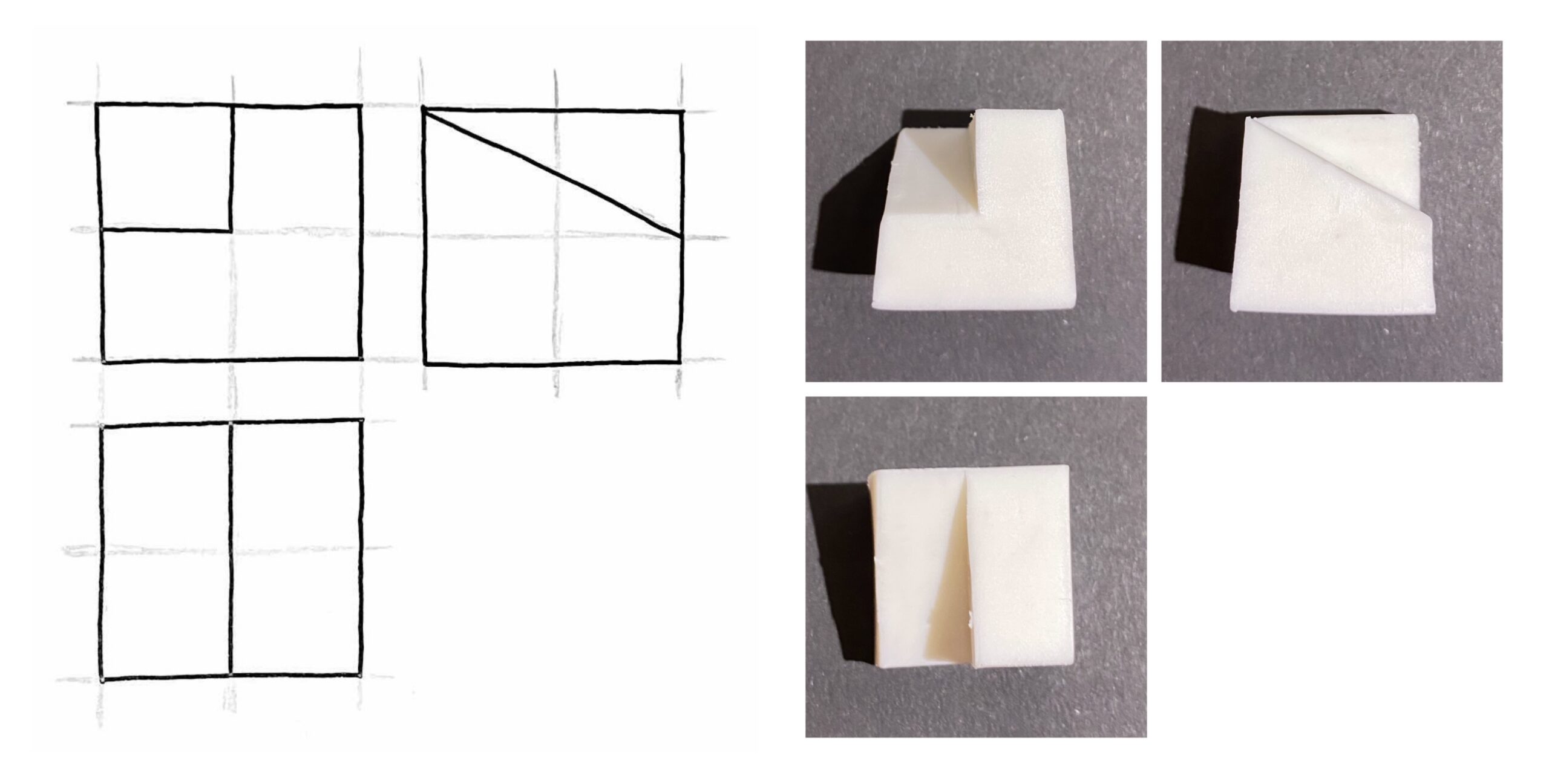

To come up with my own shape, I sketched a few out, trying to find ones that had more ambiguous orthographic projections, like the three given ones.

I picked one, and I went through the same process as for the others, drawing it in a cube, sculpting it, and comparing back to the orthographic.

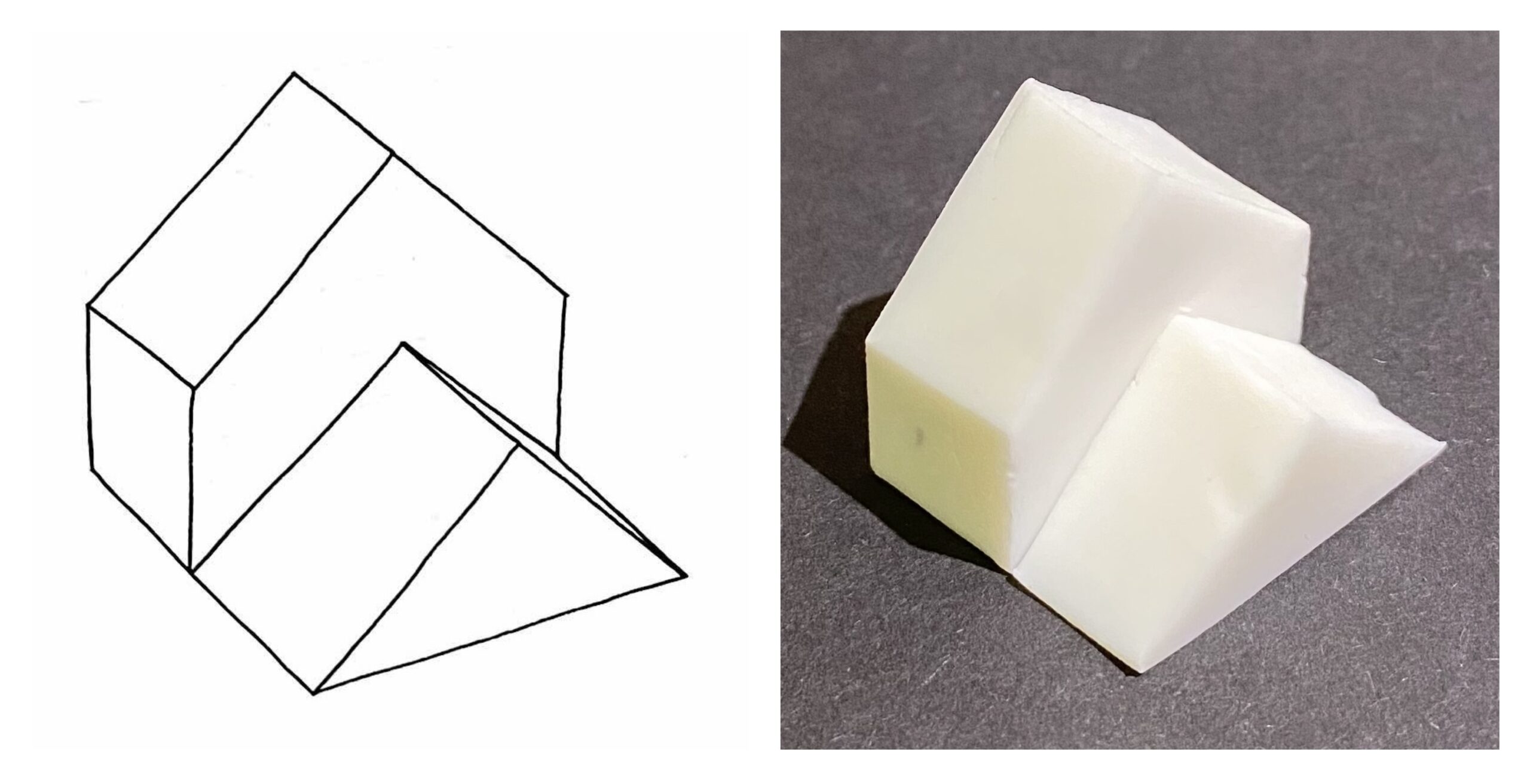
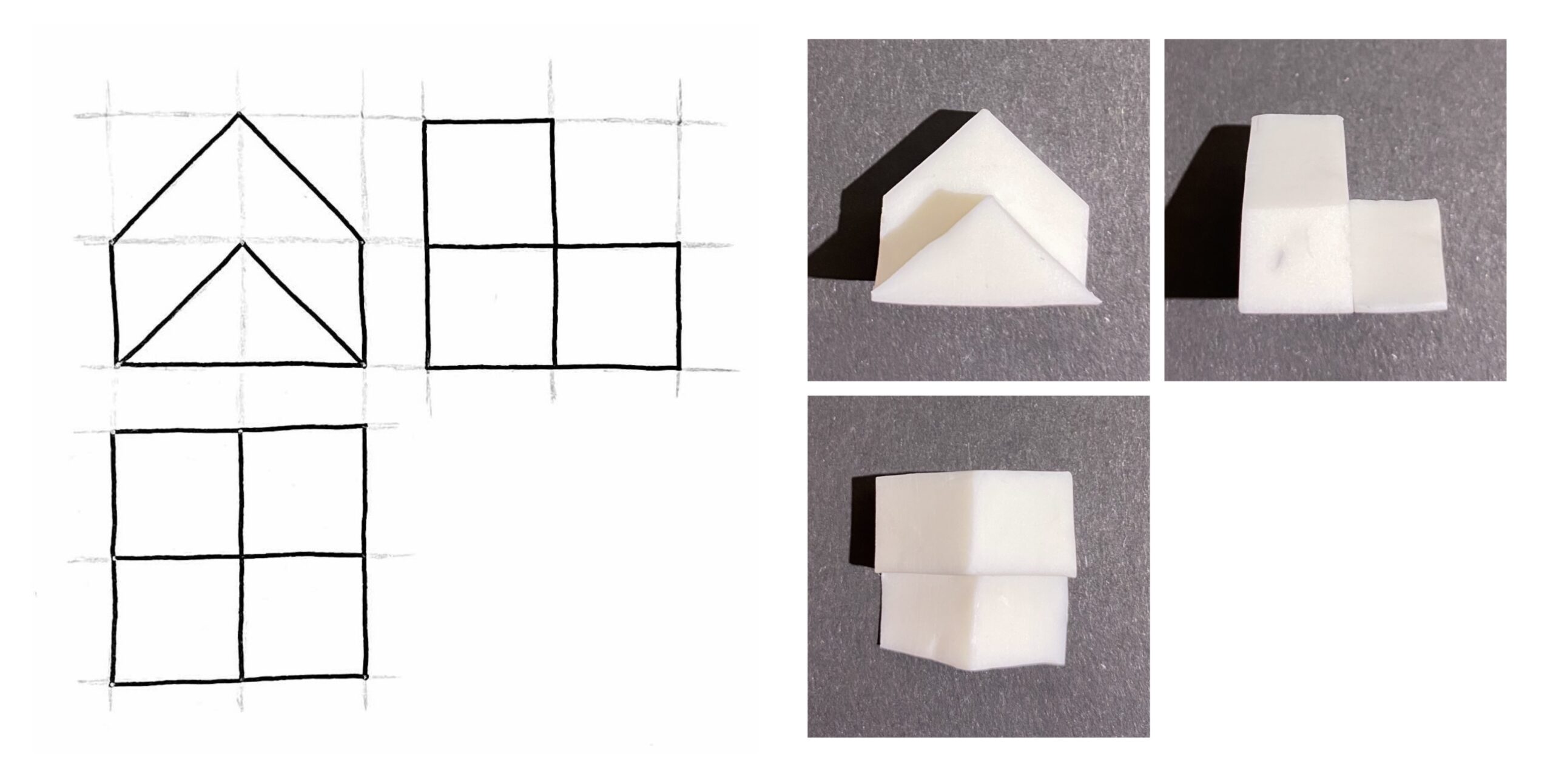
What made this really interesting is that I tended to think an orthographic could on its own perfectly show how a shape was. But it turns out it can actually be pretty ambiguous, and challenging to translate it back into 3D. So this also shows the importance of modelling, or using several drawing types when communicating an idea.